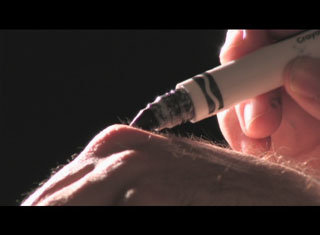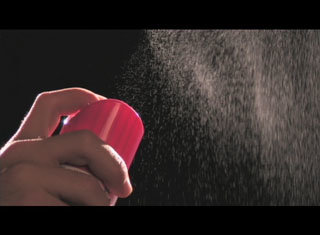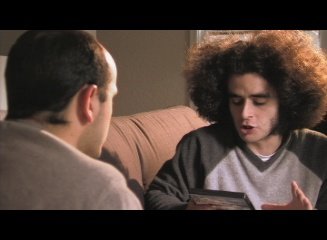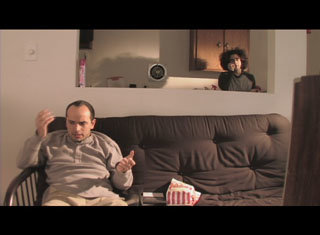
Josh Bass
Basic Member-
Posts
550 -
Joined
-
Last visited
Everything posted by Josh Bass
-
I own this mic, and yes, it does pretty well. The thing is, even if the mic itself is $200 or less, you can't just use the mic, you MUST also own the K6 power. . .module. It's a system, so the capsule (the mic part) plugs into the K6 (power), which also has the XLR output. Together they should run you about $400ish. I may have gotten the system for $360 or so, but it was so long ago I could be wrong. The neat thing is that there are other capsules besides the ME66 that can plug into the K6, so if you get the ME66 and later decide you want a handheld mic, or a cardioid mic, you can buy them and swap them out with the ME66, and it's relatively inexpensive (the ME64, a cardioid mic, is around $150). As for how well the mic works-- it's a supercardioid/shotgun mic, so it's meant to pick up sounds from a distance (as opposed to a handheld mic or something), and it has really narrow pickup pattern. For a super clear recording, around 2 feet from an actor is a good distance, with it really becoming echo-y around 6 feet. You also want to point right at the actor, and make sure they're speaking right in the direction of the mic. If they, for instance, are talking, looking in the exact direction of the mic, and then turn their head 90 degrees left/right, you'll notice the volume level/richness drop off significantly. Some people also complain about it's "coloration of off-axis reflections", which means (I think) sound hitting the mic from directions other than in front of it. The Audio Technica AT4073a, at $550 or so, is allegedly a much better mic. I haven't used it.
-
I think he meant for news.
-
Made the right choice?
Josh Bass replied to Tommy Hughes's topic in Students, New Filmmakers, Film Schools and Programs
In my opinion: YES! A great beginning book! This is one of the first ones I read, and even though it's quite old, almost everything in it is still in practice today. It'll teach you about the action axis/screen direction, how different framings/compositions affect the viewer psychologically, and what they convey (low angle vs. high angle, etc.). . .those are the things that stuck with me (I can't even remember what the 5 C's are off hand. . .close ups, cutting, continuity, something and something), but yes, good choice. -
You got me. It makes pretty pictures (I've seen 'em projected on a larger screen, and it holds up nicely, even in 4:3), so that's all that matters to daddy.
-
I refer you to this diagram: from this article: http://www.dvinfo.net/canonxl2/articles/article06.php It describes the CCD block layout of the XL2. To me, it looks noticably sharper in 16:9 than 4:3. I did a short film recently where I had to do a lot of cropping/blowing up to keep unwanted elements out of the frame, and the 16:9 holds up much better to blowup than the 4:3. Maybe that's just 'cause I'm looking at a letterboxed image on my monitor instead of one that fills the whole screen (when in 16:9).
-
Doesn't it start out higher res in 16:9? It has a 960x720 chip, and uses the 720x480 part for 4:3, and the 960x480 part for 16:9, which gets compressed (or whatever) to 720x480.
-
If he does better with improv, why can't he improv it, then? Say the same thing as the script, but in his own words?
-
The XL1's 16:9 is not real 16:9, it just crops the top and bottom of the frame, and then squeezes it to fill a 4:3 frame, so the NLE can re-squeeze it back to 16:9, but you're still losing all the pixels you'd lose by cropping in post. The XL1s has viewfinder guides for 16:9, you can turn them on when the cam's set to 4:3, and use them to frame, and crop later. I don't know if the XL1 has these too.
-
Here's a random thought on this: What's the deal with having actors whose lips are the same color as their face? I've noticed this on TV, and in a few movies (Boondock Saints, Scrubs). It draws my attention to the makeup. Is it supposed to look natural? It doesn't! Real people have color in their lips; yes even guys!
-
Part Deux Since it won't let me upload more photos, I'll start another post These are from the same project, though I didn't end up using any of this footage. I still think it looks pretty cool. Here we have a black backdrop, some duvetyne (sp?) I've acquired somewhere, held by a c stand. The edge lights are the 650 and an 300w fresnel, one on each side of the various subjects, and the softbox filling from the front.
-
Here's something I'm still working on. I shot/directed/wrote/edited it. Here's some stills. . . Most of the fill/ambient light in the room is real ambient daylight, though the "sun" on the subjects is a 1K mole fresnel with some kind of ND gel on it (probably a .3); I balanced the camera for daylight and let thes "sun" go warm. There's a 2x3 Chimera gelled blue for extra fill in some shots, and a 650 fresnel in the wide. The 650 is the spot on the wall in the kitchen. The sun, if you look at the wide/2shot, is off to the right, out of frame. 650 next to it, with barn doors closed and twisted to create that spot. The softbox is pretty much in front of them, out of frame (camera's axis in the 2s/wide shot). In retrospect, I wish I'd let the sun, when it's backlighting the afro'd fella, go hotter, and the same in the single of the afro-less guy (but just a little hotter). Actually I don't care for the light's positioning in that one, but we were in a hurry, and technically, that's the "correct" position for that source, from that angle, even though it's flat on his face, so I couldn't think of anything clever to do to cheat it, and didn't want to lose even more time. Oh, in addition, the 650 became the splash in the room behind him for that shot.
-
I'm glad someone liked it. Seems to be getting crappy word of mouth. I liked part 2 a lot, was lukwarm on part 1, and I'm kinda scared to see this one 'cause of most of the reviews I've seen.
-
If you could make a film on ANY book/story...
Josh Bass replied to Dan Goldberg's topic in Off Topic
I'm sorry; you left out rabid anti-Semitism. -
Are we not able to edit posts anymore? I remembered-- another reason I don't necessarily like to shoot using your method is that if you set the XL2 for maximum dynamic range by putting the black setting on "stretch", you get really weird results if portions of your image are severely underexposed (I'm talking around 5 stops under here). For instance, on a sunny day, if you shoot something with both shady areas and areas getting blasted by direct sunlight, and then stop down/use NDs so that the sunlit areas are correctly exposed, the shady areas in your shot, which should be nearly invisible, are instead perfectly visible and sharply defined, albeit very dark, and are almost colorless, everything being reduced to a desaturated blue/grey. It's really odd. I don't like the way it looks at all.
-
Yes, true, but I've also heard people who advocate getting as close to your final look in camera as possible, as opposed to shooting a clean, neutral image and manipulating it later. At any rate, she was asking why her images lacked punch, so I was trying to give her some clues as to how to make it snappier using in-camera methods.
-
A couple things: When you make changes to color, pedestal, etc., you have to do it within a custom preset, and then make sure that preset is turned on to see the changes. Secondly, if you're used to the DVX series from Panasonic, you'll find that the XL2 doesn't let you push the look as far as you can push the DVX in terms of saturation and contrast. The XL2 seems to be trying to keep your image legal and nice looking, so if you want to push your looks really far, you'll have to do in post. That being said, create a custom preset with the following parameters changed: color matrix - cine gamma - cine Knee - low Black - press This should give you a noticably snappier and cinematic look. From there, if you increaste the color saturation, you'll get a more colorful saturated look. You can also manipulate the R,G, and B gain (increase them) in unison to get even more color saturation. You can manipulate the white balance, to some degree, by messing around with the R, G, and B gain separately. As you decrease master ped and setup, the image will get contrastier as the shadow portions of your image get darker.
-
If you could make a film on ANY book/story...
Josh Bass replied to Dan Goldberg's topic in Off Topic
I'll chime in. . . Any of Alistair Reynolds' Inhibitor trilogy stuff Anything by Lovecraft. . .(maybe minus the rabid racism/Anti-semitism) (yes I know some already have, but come on. . .let's try harder) But they would fu** it up. They always do. -
Yeah. . . Here's how I've heard it. . . 24p is edited in a 60i/30fps timeline, good for mixing with 60/30fps footage, for TV, interlaced DVDs 24pA edited in a 24p timeline, good for filmout, progress 24p DVDs, can be converted back to 24p standard. It sounds like someone said that 24pA will get you a cleaner look in the end, just want to see if that's confirmed.
-
To which camera does this pertain? All? I have an XL2. . .so are you saying that 24pA is always better than 24p, if your NLE can handle it? I was under the impression neither one made a better/cleaner picture in the end, just that they had different uses.
-
I say you operating directors are either geniuses or crazy. . . I did a short last year, where I DP'd/Directed simultaneously. I've done this on all past projects, and never really thought much of it. This time, I wanted to be more perfromance-conscious. I wish I had had someone else do it, because I don't see how you can possibly really judge what's going on looking through a tiny viewfinder, unless it's a really close CU. On a medium/wide, you can't see anything but the most obvious of what's going on in frame. I noticed, while editing, so many things I would've fixed while shooting if I'd noticed them, but I was distracted by trying to frame, follow movement, etc. If you really care about the quality of the performance, I don't see how you could possibly do both at once. Having a large monitor to watch helps, but you still have some of the same issues.
-
I believe the problem with the thread was that the topic has been debated a thousand times in a thousand other threads, and each one stretches to 20+ pages, eventually degrading into a shitslinging fest between the various members.
-
Multiple Camera Angles
Josh Bass replied to Terry Hsieh's topic in Students, New Filmmakers, Film Schools and Programs
Hey, on your shot with the arm on the sofa mismatching the other take, could you zoom it in (in post) to crop the arm out? I'm doing a short with the same situation. . .in one guy's CU/OTS, his arm's along the top of a couch, and in the other guy's CU/OTS, it's down. I just zoomed in the shot to where you can't tell. It's not so much that the resolution falls apart. Sorry to get off topic. -
I'd just like to say, for the record: The XL2 has built-in XLRs (though it's important to note they accept a line level signal, MIC only), but the XL1s and XL1 DO NOT. You have to buy an XLR adapter for around $2-300. Are you sure about this "no sales tax on film equipment" thing? I've bought plenty here, and paid taxes on it.









